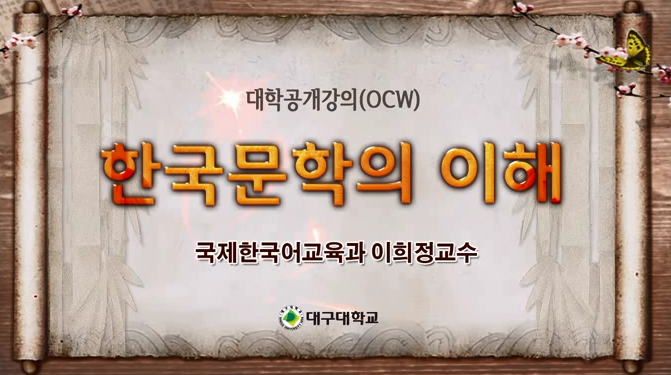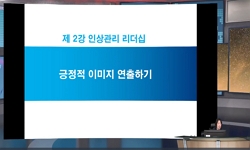The study aims to understand and explore how the theory of humor (諧謔) had become prominent as important literary characteristics in the history of Korean modern literature. As everyone knows, the Korean literature tradition was critically discusse...
http://chineseinput.net/에서 pinyin(병음)방식으로 중국어를 변환할 수 있습니다.
변환된 중국어를 복사하여 사용하시면 됩니다.
- 中文 을 입력하시려면 zhongwen을 입력하시고 space를누르시면됩니다.
- 北京 을 입력하시려면 beijing을 입력하시고 space를 누르시면 됩니다.

1950∼60년대 해학론의 전개 양상과 그 의미 = A Study on Development and Significance of Theory of Humor in 1950-60’s
한글로보기https://www.riss.kr/link?id=A108092416
-
저자
이만영 (고려대학교)
- 발행기관
- 학술지명
- 권호사항
-
발행연도
2022
-
작성언어
Korean
-
주제어
해학(론) ; 전통(론) ; 백철 ; 서울 국제펜대회 ; 고전문학 ; 근대문학 ; 한국문학 ; 세계문학 ; 특수성 ; 보편성 ; Theory of Humor ; Theory of Tradition ; Baek Chul ; The 37th PEN International Congress in Seoul ; Classical Literature ; Modern Literature ; Korean Literature ; World Literature ; Specificity ; Universality
-
등재정보
KCI등재
-
자료형태
학술저널
- 발행기관 URL
-
수록면
63-90(28쪽)
-
KCI 피인용횟수
0
- DOI식별코드
- 제공처
-
0
상세조회 -
0
다운로드
부가정보
다국어 초록 (Multilingual Abstract)
The ‘humor’ which came to the forefront from mid-1950’s was considered as a concept word that mediates classical literature and modern literature. Baek Chul strongly believed that the traditional value like ‘humor’ can integrate classical literature with modern literature. Classical literature writers like Jung Byung-wook, Shin Yun-sang attempted to restore traditional characteristics of the humor accordingly. In addition, Kim Sa-yeob and Lee O-young tried to arrange the concept of humor systematically and established a theoretical foothold for the theory of humor which became prominent since 1960’s.
The ‘humor’ was discussed in two primary aspects after 1960’s. Firstly, the ‘humor’ was considered as significant characteristics that embrace specificity of Korean literature but also universality of the world literature. Such recognition became stronger with some events: joining International PEN in 1954, Nobel Prize in 1968 awarded to Yasunari Kawabata, and the 37th PEN International Congress in Seoul held and titled <Humour in Literature - East and West> in 1970. Secondly, the ‘humor’ was thought as literary talent essentially required to overcome political dynamics in the country and abroad such as anticommunism and cold war. The agenda of the 37th PEN International Congress in Seoul in which many eastern countries engaged in was set as the ‘humor’ and it explains why many argued that the polarized world can turn into ‘the world of harmony’ through the humor.
As explained above, the concept of the humor in 1950-60’s was used widely used as a mechanism to settle problems arising from discontinuity between classical and modern literature, distance between specificity of Korean literature and universality of the world literature, and also political dynamics in the country and abroad such as anticommunism and cold war.
The study aims to understand and explore how the theory of humor (諧謔) had become prominent as important literary characteristics in the history of Korean modern literature. As everyone knows, the Korean literature tradition was critically discussed in depth in 1950-60’s and that’s when the new concept, humor had a moment. The purpose of this study is to look at how the theory of humor developed, and its characteristics as suggested in 1950-60’s and find out how the literary set tried to identify Korean literature back then based on discussion.
The ‘humor’ which came to the forefront from mid-1950’s was considered as a concept word that mediates classical literature and modern literature. Baek Chul strongly believed that the traditional value like ‘humor’ can integrate classical literature with modern literature. Classical literature writers like Jung Byung-wook, Shin Yun-sang attempted to restore traditional characteristics of the humor accordingly. In addition, Kim Sa-yeob and Lee O-young tried to arrange the concept of humor systematically and established a theoretical foothold for the theory of humor which became prominent since 1960’s.
The ‘humor’ was discussed in two primary aspects after 1960’s. Firstly, the ‘humor’ was considered as significant characteristics that embrace specificity of Korean literature but also universality of the world literature. Such recognition became stronger with some events: joining International PEN in 1954, Nobel Prize in 1968 awarded to Yasunari Kawabata, and the 37th PEN International Congress in Seoul held and titled <Humour in Literature - East and West> in 1970. Secondly, the ‘humor’ was thought as literary talent essentially required to overcome political dynamics in the country and abroad such as anticommunism and cold war. The agenda of the 37th PEN International Congress in Seoul in which many eastern countries engaged in was set as the ‘humor’ and it explains why many argued that the polarized world can turn into ‘the world of harmony’ through the humor.
As explained above, the concept of the humor in 1950-60’s was used widely used as a mechanism to settle problems arising from discontinuity between classical and modern literature, distance between specificity of Korean literature and universality of the world literature, and also political dynamics in the country and abroad such as anticommunism and cold war.
참고문헌 (Reference)
1 "현대문학"
2 신윤상, "한국의 유모어-시가의 해학 연구" 영진사 1963
3 한림과학원, "한국근대신어사전" 선인 2010
4 박헌호, "카프해산 전후기의 풍자소설론과 풍자소설" 반교어문학회 3 : 1991
5 "중앙일보"
6 "조선일보"
7 박연희, "제 29차 도쿄 국제펜대회(1957)와 냉전문화사적 의미와 지평" 한국학연구소 (49) : 189-222, 2018
8 김사엽, "웃음과 해학의 본질-국문학의 특질 구명을 위하여" 한국어문학회 2 : 1958
9 모윤숙, "영운 모윤숙 문학전집 6-回想의 창가에서" 성한출판 1986
10 백 철, "세계 작가회의의 수확 : 제37차 PEN 회의를 마치고" 국회사무처 104 : 1970
1 "현대문학"
2 신윤상, "한국의 유모어-시가의 해학 연구" 영진사 1963
3 한림과학원, "한국근대신어사전" 선인 2010
4 박헌호, "카프해산 전후기의 풍자소설론과 풍자소설" 반교어문학회 3 : 1991
5 "중앙일보"
6 "조선일보"
7 박연희, "제 29차 도쿄 국제펜대회(1957)와 냉전문화사적 의미와 지평" 한국학연구소 (49) : 189-222, 2018
8 김사엽, "웃음과 해학의 본질-국문학의 특질 구명을 위하여" 한국어문학회 2 : 1958
9 모윤숙, "영운 모윤숙 문학전집 6-回想의 창가에서" 성한출판 1986
10 백 철, "세계 작가회의의 수확 : 제37차 PEN 회의를 마치고" 국회사무처 104 : 1970
11 "사상계"
12 서영채, "민족,주체,전통; 1950~60년대 전통논의의 의미" 민족문학사연구소 (34) : 10-48, 2007
13 "매일신보"
14 "매일경제"
15 왕캉닝, "린위탕과 한국-냉전기 중국 문화·지식의 초국가적 이동과 교류를 중심으로" 고려대 2021
16 "동아일보"
17 국제 P.E.N. 한국본부, "동서문학의 해학: 제37차 세계작가대회 회의록"
18 백철, "국문학전사" 신구문화사 1957
19 정병욱, "국문학산고" 신구문화사 1959
20 이도연, "국문학 연구에 있어 희극성의 ‘개념’과 ‘범주’ 설정을 위한 예비적 시론" 인문학연구원 (65) : 449-472, 2011
21 "경향신문"
22 Hans Ulrich Gumbrecht, "Shall we continue to write histories of literature?" The Johns Hopkins University Press 39 (39): 2008
23 이주라, "1930년대 김규택의 유모어소설과 웃음의 새로운 가능성" 민족어문학회 (74) : 99-131, 2015
동일학술지(권/호) 다른 논문
-
오월 광주 : 유령과 연대하기—임철우의 단편소설을 중심으로
- 현대문학이론학회
- 최다의
- 2022
- KCI등재
-
한국 좀비 소설의 서사와 윤리-타자에 대한 사유의 전환과 구원의 모색을 중심으로
- 현대문학이론학회
- 박찬효
- 2022
- KCI등재
-
- 현대문학이론학회
- 류희식
- 2022
- KCI등재
-
비물질적 기호의 의미생성과 사건의 반복— 최상규의 『새벽기행』론
- 현대문학이론학회
- 정소미
- 2022
- KCI등재
분석정보
인용정보 인용지수 설명보기
학술지 이력
| 연월일 | 이력구분 | 이력상세 | 등재구분 |
|---|---|---|---|
| 2022 | 평가예정 | 재인증평가 신청대상 (재인증) | |
| 2019-01-01 | 평가 | 등재학술지 유지 (계속평가) |  |
| 2016-01-01 | 평가 | 등재학술지 유지 (계속평가) |  |
| 2012-01-01 | 평가 | 등재학술지 유지 (등재유지) |  |
| 2009-01-01 | 평가 | 등재학술지 선정 (등재후보2차) |  |
| 2008-01-01 | 평가 | 등재후보 1차 PASS (등재후보1차) |  |
| 2007-01-01 | 평가 | 등재후보 1차 FAIL (등재후보1차) |  |
| 2006-01-01 | 평가 | 등재후보학술지 유지 (등재후보2차) |  |
| 2005-01-01 | 평가 | 등재후보 1차 PASS (등재후보1차) |  |
| 2004-01-01 | 평가 | 등재후보학술지 유지 (등재후보1차) |  |
| 2002-01-01 | 평가 | 등재후보학술지 선정 (신규평가) |  |
학술지 인용정보
| 기준연도 | WOS-KCI 통합IF(2년) | KCIF(2년) | KCIF(3년) |
|---|---|---|---|
| 2016 | 0.54 | 0.54 | 0.54 |
| KCIF(4년) | KCIF(5년) | 중심성지수(3년) | 즉시성지수 |
| 0.51 | 0.5 | 0.879 | 0.19 |




 KISS
KISS






